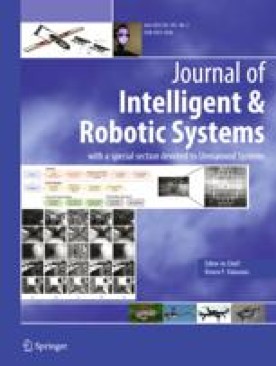A Springer Nature journal has decided not to retract a paper it had been investigating for plagiarism since receiving allegations in January 2021. The decision came 1.5 years since the editor-in-chief apparently agreed the paper should be retracted, and just a few days after we reported on the case.
Systems engineer Paola Di Maio notified Springer Nature in January 2021 that the article, “Robotic Standard Development Life Cycle in Action,” published in the Journal of Intelligent & Robotic Systems, described a methodology she had developed without crediting her work. As we wrote in our post on Friday, Aug. 5th:
In subsequent back-and-forth emails we obtained, an editorial assistant told Di Maio in March of 2021 that the journal’s editor in chief agreed with her that the paper should be retracted. But a year later, when Di Maio followed up, the staffer said that the authors of the paper made claims in response that the journal needed to look into. The paper has not been retracted or marked with an expression of concern. A spokesperson for the publisher said the investigation is “coming towards an end” and the individuals involved will learn the outcome “shortly.”
The following Monday, Aug. 8th, the editorial assistant wrote to Di Maio “on behalf of Springer and the Editor in Chief, Professor Kimon Valavanis,” informing her of the decision:
Please accept my apologies for the delay in getting back to you. Springer and the Editor in Chief would like to inform you that we have concluded our investigation and that at this point, we see no reason to take editorial action.
We have investigated the matter in accordance with COPE guidelines. While there may be similarities to the ideas you have previously presented and some of the concepts in the article, and while you have noted that you were part of a working group that also involved some of the authors, it has not been possible to determine where the ideas and concepts as described in this article originate. We have not been able to determine that there is clear overlap between the material you have provided and the content of the article. The Editor-in-Chief, unfortunately, is not in a position to determine who was the first to come up with a specific idea or concept, and again we note that the overlap with the concepts in the article doesn’t appear to be identical to concepts from your work.
This case also comes across as a potential authorship dispute, as you have stated that you contributed to the working group that eventually led to the publication of this manuscript and as such you may or may not deserve co-authorship. However, the journal can’t adjudicate authorship disputes, and these need to be investigated by the institution where the relevant research has originated.
We, Springer and the Editor in Chief, appreciate this is not the outcome you were hoping for. I would like to additionally apologise for the time this process has taken and for the confusion we have caused by originally informing you that we would retract the article. Those remarks were premature and made before completing the investigation. However, as our investigation is now completed, we have to conclude that at this point we see no reason to take any further action.
The corresponding author of the article, Joanna Isabelle Olszewska of the University of West Scotland in Paisley, just outside of Glasgow, did not respond to our request for comment.
A spokesperson for Springer Nature told us:
Unfortunately, the initial response was given prematurely – we apologise for the confusion this caused. Having carefully considered the case, in line with best practice COPE guidelines, we have concluded that retraction was not the appropriate course of action to take.
Di Maio responded to the editorial assistant protesting the decision, and heard back that she could take up the case with COPE. She called the changed decision not to retract the paper “indefensible”:
Technically, there can be no doubt that the paper in question plagiarises all the steps of my method published ten years earlier, which I contributed to the group during documented email exchanges, presentations and calls during my participation in the IEEE [Institute of Electrical and Electronics Engineers] standard. These exchanges have been supplied as hard evidence and the outcome of the complaint was clear: the paper was going to be retracted.
The change of decision of the publisher not to retract a plagiarized paper is indefensible
The statement that they cannot determine whether the paper they published is plagiarized or not, is plain false and unsupported. The decision is contrary to the evidence and contrary to the communication sent to me by the publisher until RW published an article about the delay in executing the decision.
Like Retraction Watch? You can make a tax-deductible contribution to support our work, follow us on Twitter, like us on Facebook, add us to your RSS reader, or subscribe to our daily digest. If you find a retraction that’s not in our database, you can let us know here. For comments or feedback, email us at [email protected].

In such cases, often journals issue an expression of concern, or at least a correction or an authors’ response can be published by the authors [1]. Alternatively, the journal can offer Dr. Paola Di Maio the chance of publishing a discussion on the article [1], and the authors should, in return, publish a reply to the discussion.
1. Olszewska, Joanna Isabelle, Michael Houghtaling, Paulo JS Goncalves, Nicola Fabiano, Tamas Haidegger, Joel Luis Carbonera, William Remington Patterson, S. Veera Ragavan, Sandro R. Fiorini, and Edson Prestes. “Robotic standard development life cycle in action.” Journal of Intelligent & Robotic Systems 98 (2020): 119-131.